Architecture and History in Winnipeg’s Exchange District
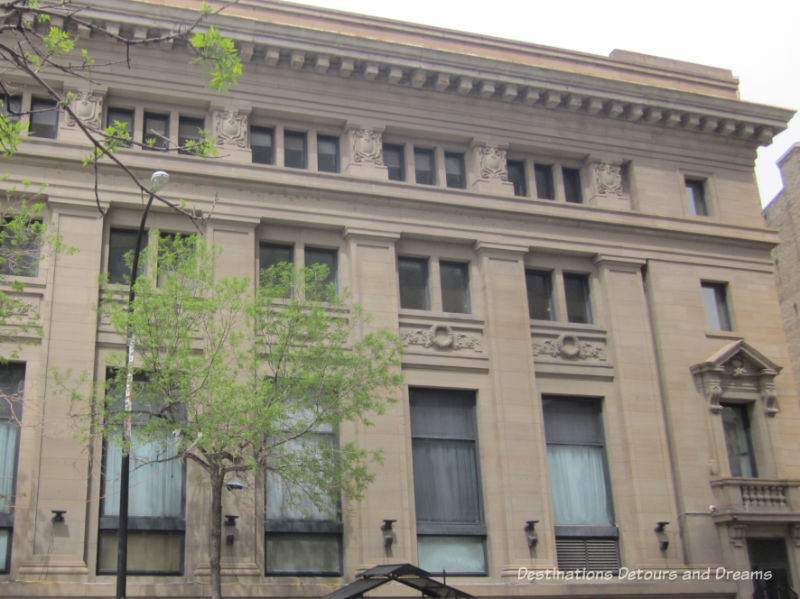
A walking tour of the east end of Winnipeg’s Exchange District National Historic Site
The Exchange District National Historic Site, a 20 block area in central Winnipeg, Manitoba, is the original centre of commerce and culture in the city. The area boasts many heritage buildings and historic sites from the period of 1880 to 1920, when Winnipeg was known as “Gateway to the West” and “Chicago of the North”.
During the summer months, the Exchange District Biz offers a variety of guided walking tours. In 2014, I took the East Exchange tour, which focused mainly on the area east of Main Street, where the warehouse district once resided and where events of significance to Winnipeg’s General Strike of 1919 took place. Today the area is home to condos, restaurants, nightclubs, theatres, businesses, and retail outlets. I updated the post in 2017 with current status information.

The tour started in front of Bijou Park. In 1873, a jail containing cells on the main floor and underground, was built on this site. The jail was demolished in 1884 and Clements Block and Bijou Theatre built in its place. The Bijou Theatre featured vaudeville acts until it was converted to film in the 1920s. The remnants of Clements Block and Bijou Theatre burned in 1979. Today, Bijou Park is home to craft and food vendors during the many summer events occurring in Old Market Square at the centre of the Exchange.
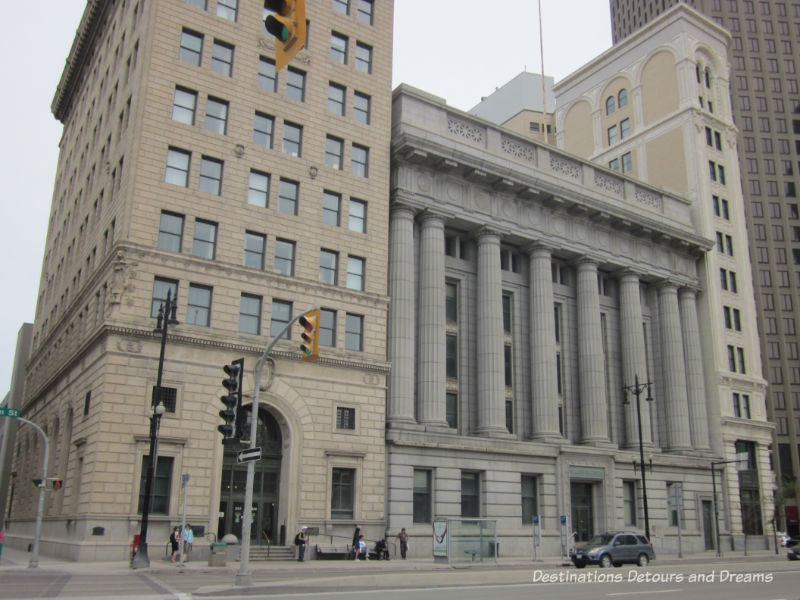
The tour then crossed Main Street and what was once known as Banker’s Row. The two block stretch of Main Street from Portage Avenue to Bannatyne Avenue was home to 20 financial institutions in the late 1800s. Each institution sought a unique way to attract customers. For example, the Bank of Toronto (not shown in the above photo) catered to wealthy females and had a powder room. Because each bank tried to stand out from the others, the architecture of each building is different from the ones beside it.
The streets on the east side of Main Street were home to the Warehouse District. The Winnipeg Transfer Railway ran along what is now Waterfront Street at the east end of the district. The spur line connected to the Canadian Pacific Railway to the north and the Canadian National Railway to the south, providing means for warehouses to transport goods.
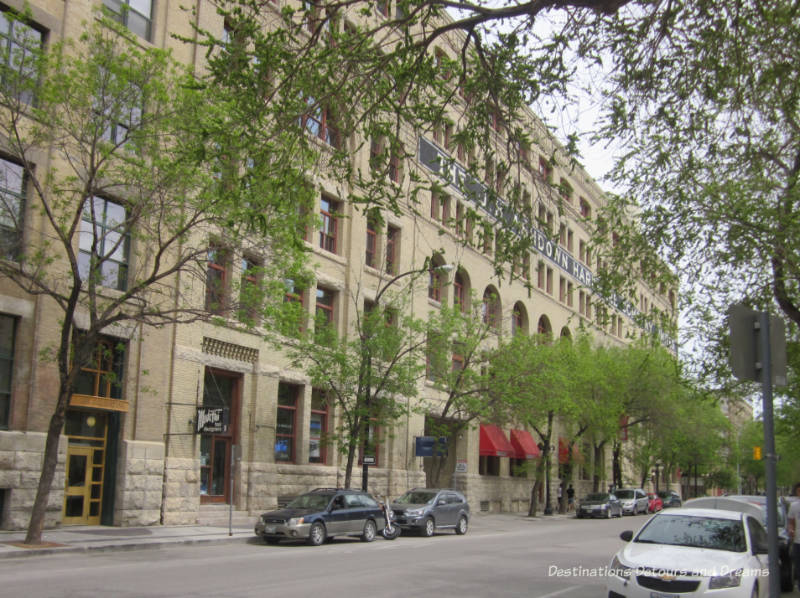
The Ashdown Warehouse building now houses condos.
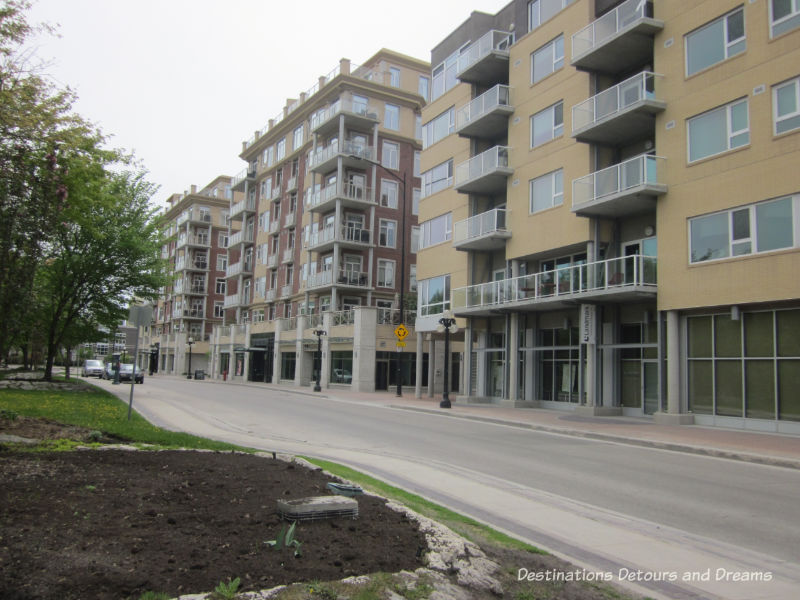
Modern condos and office buildings line the street.
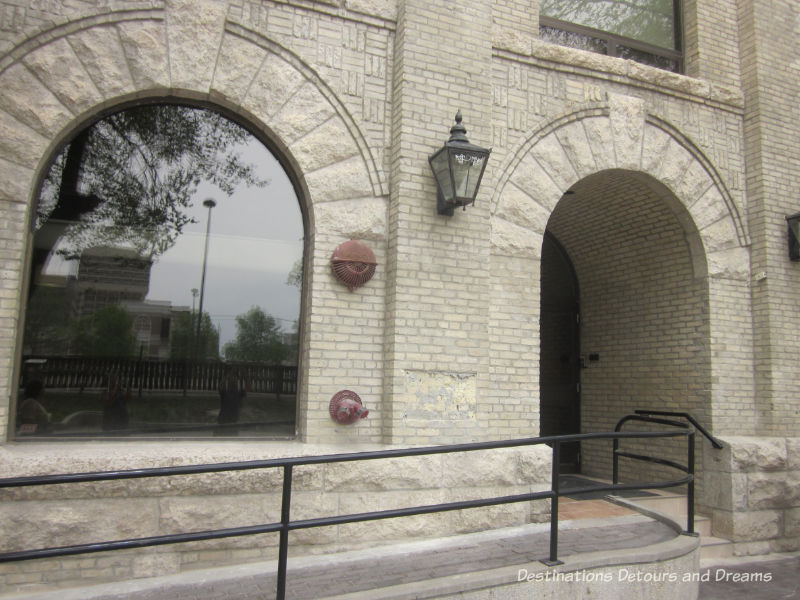
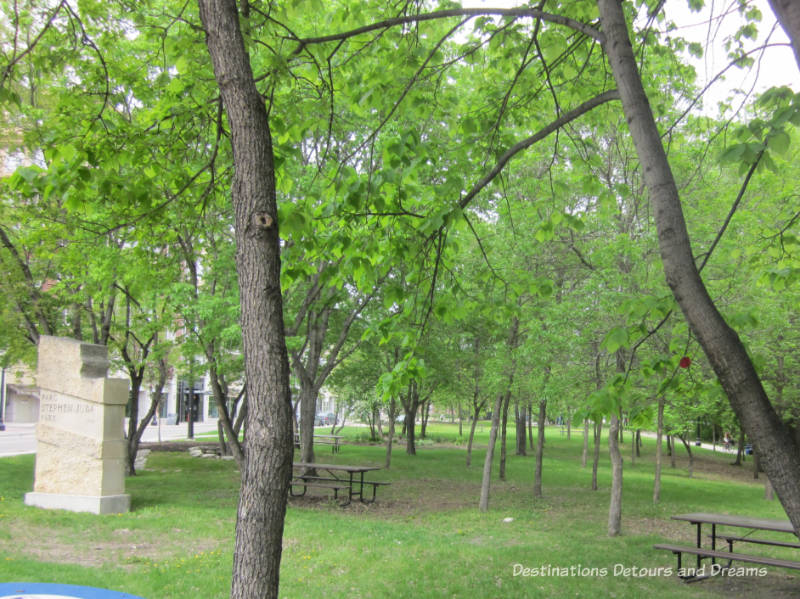
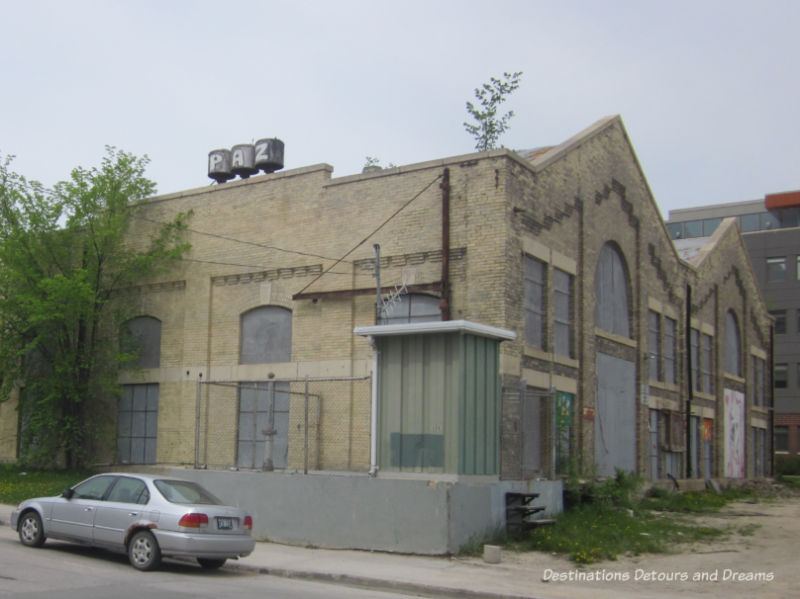
The James Avenue Pumping Station was built between 1906 and 1908 to create a dedicated fire protection system drawing water from the river. It was built largely in response to a typhoid epidemic which occurred after a serious 1904 fire forced fire fighters to pump river water into the mains of the artesian well system providing water to the city’s core. The new high pressure system was built at a cost of $1 million and introduced mains and hydrants separate from the domestic water supply. The building sat empty since 1986, when it was decommissioned and became derelict. Because the building was constructed around the machines, equipment could not be moved out. Because of its heritage designation, the building could not be torn down. Redevelopment is now in progress with commercial, retail and residential space being built around the pumps. New buildings are being constructed on the east and west ends of the station. The pumps gears will be visible from rafter-level offices and through new windows along James Street.
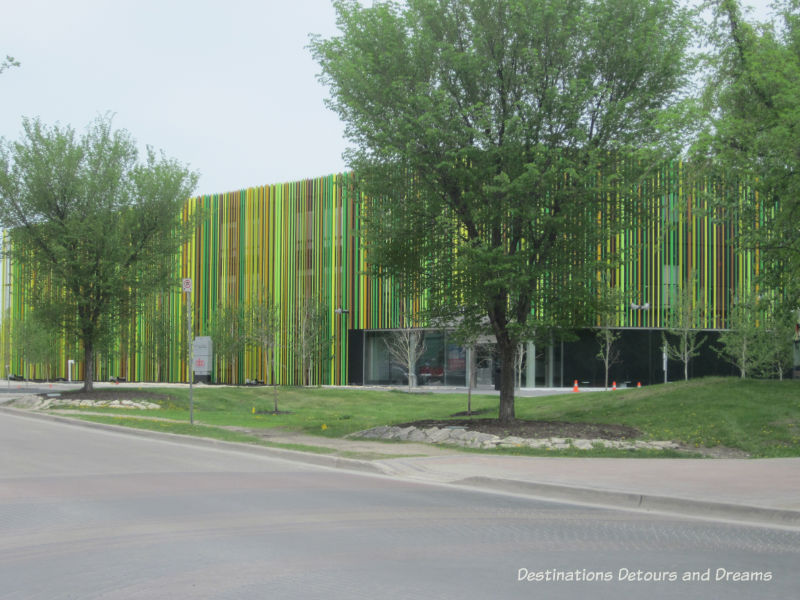
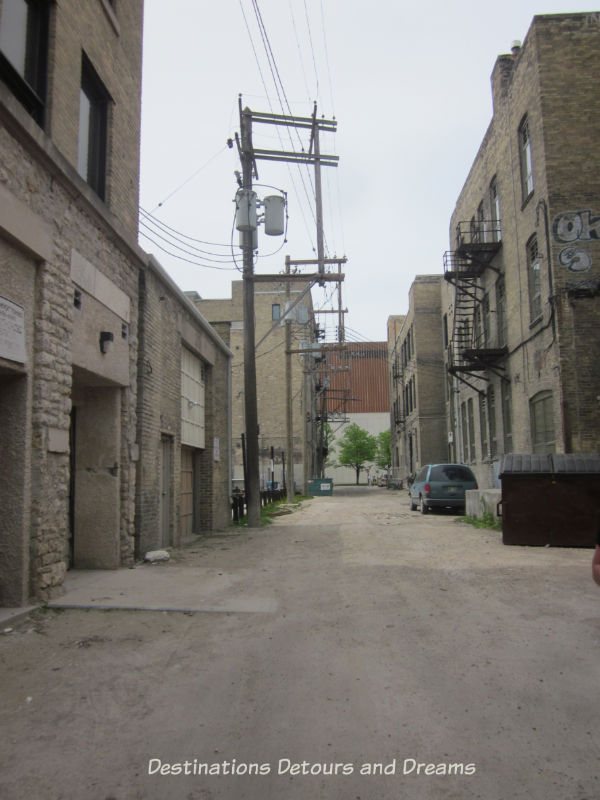
The lane between James and Market Avenues is known as Hell’s Alley because of its role in the 1919 General Strike. Unemployment, poor working conditions and low wages among the largely immigrant working class, and inflation led to labour unrest that culminated in 1919 in one of the most influential strikes in Canadian history. On May 19, 30,000 works walked off their job. The strike lasted until June 26. On June 21, now known as “bloody Sunday”, strikers gathered to protest because streetcars had started running again. Strikers stopped one streetcar and set it on fire. The Northwest Mounted Police rode into the crowd with baseball bats and firearms, killing 2 people. (The entire Winnipeg police force had been fired for refusing to sign papers agreeing to never unionize.) 200 people, including women and children, sought refuge in this alley. The police swept through the crowd and arrested over 90 people.
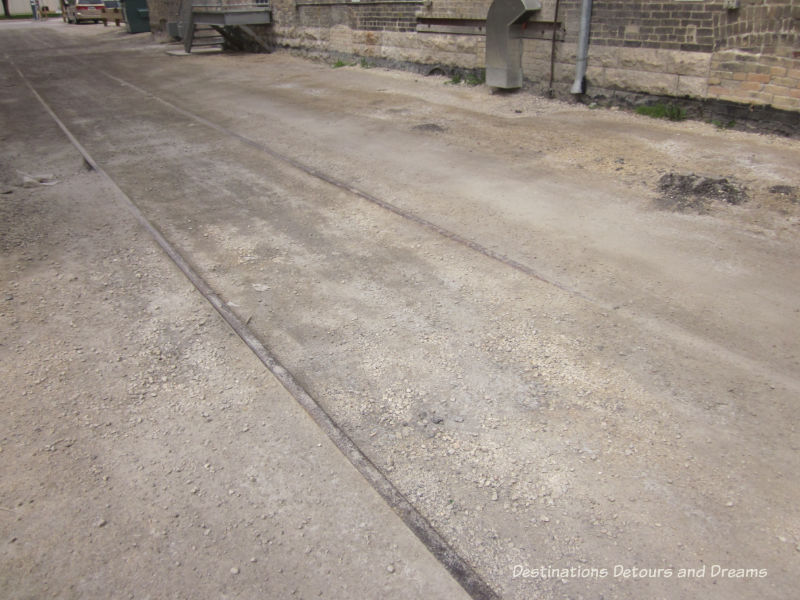
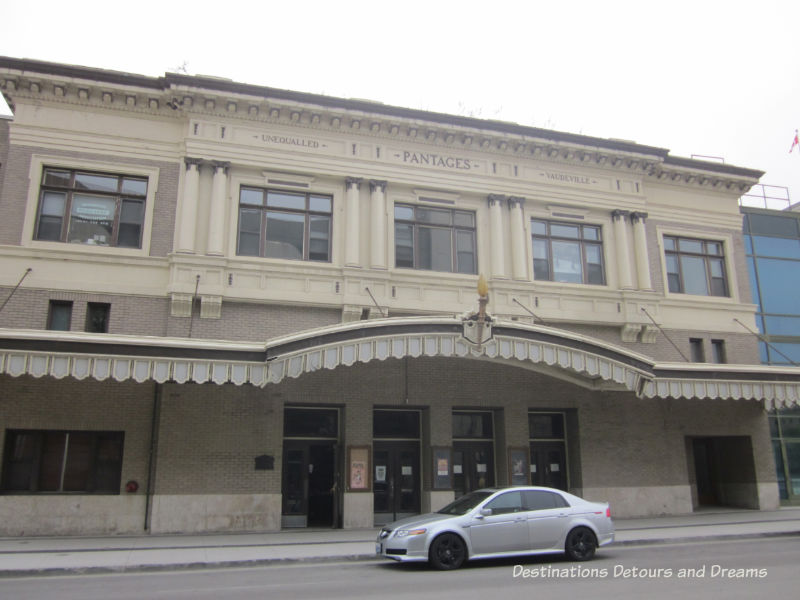
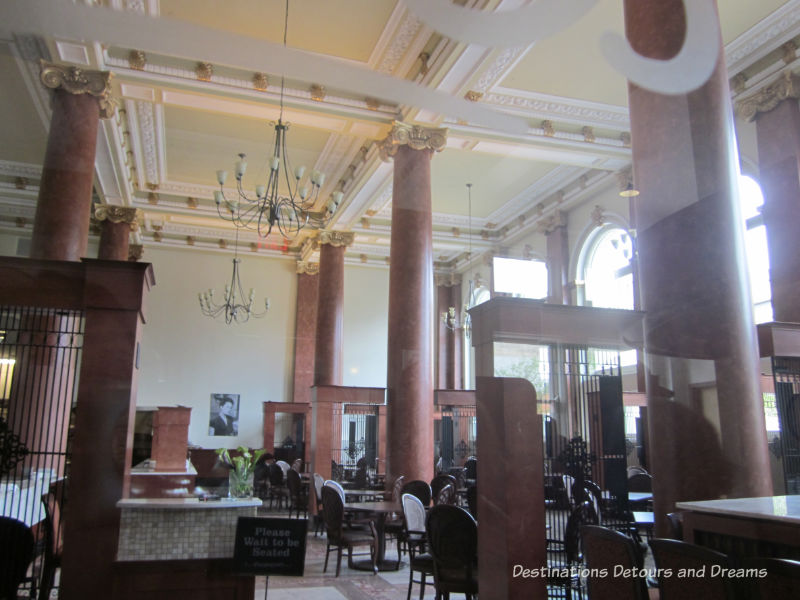
The Exchange District offers other walking tours, including a tour of the west end of the area, food tours, and specialty tours focusing on particular themes in history or the design nature of the district. Tours operate from June 1 to August 31.
PIN IT
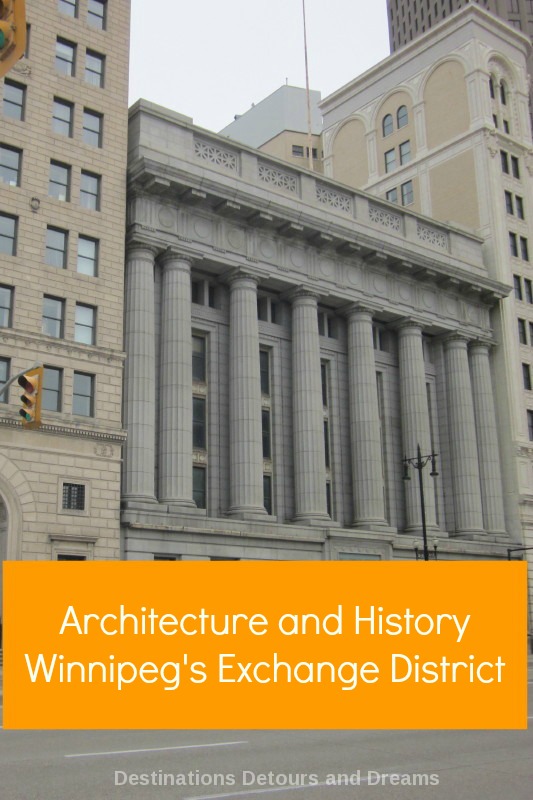
Never miss a story. Sign up for Destinations Detours and Dreams free monthly e-newsletter and receive behind-the-scenes information and sneak peeks ahead.

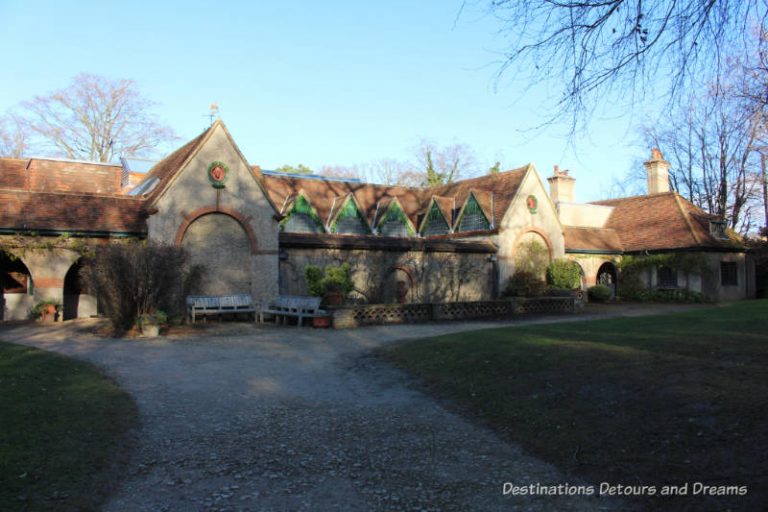
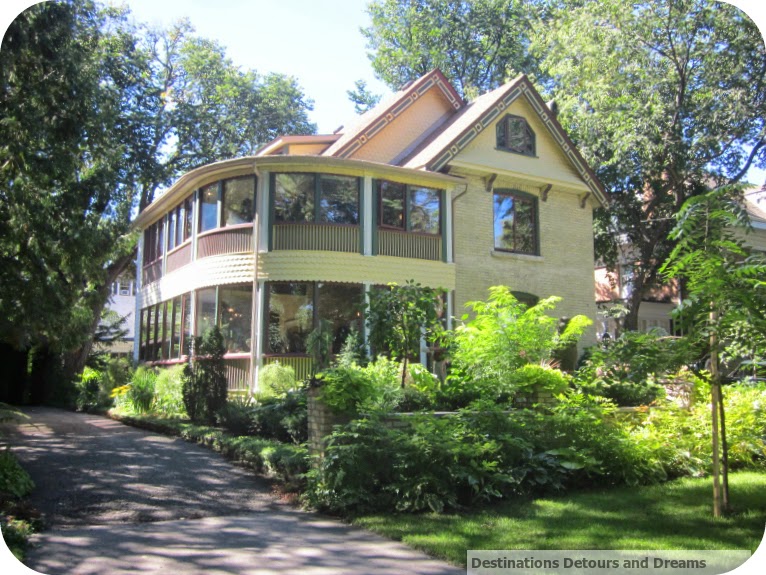
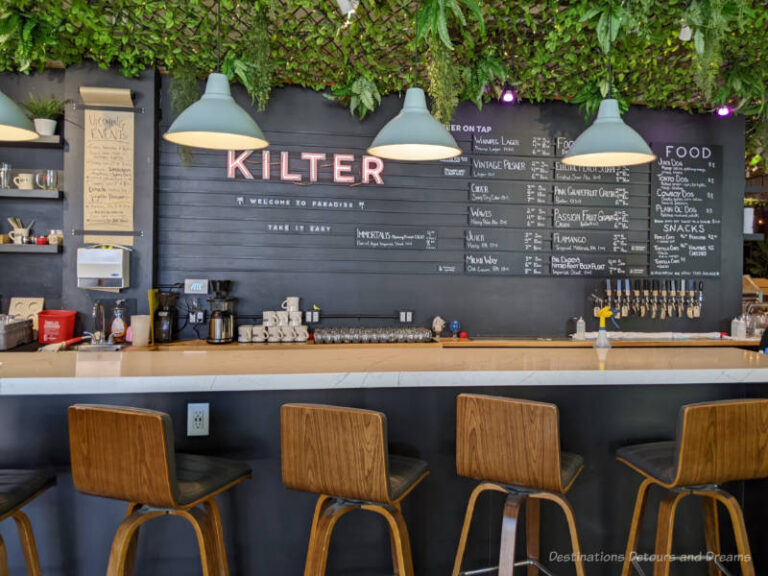
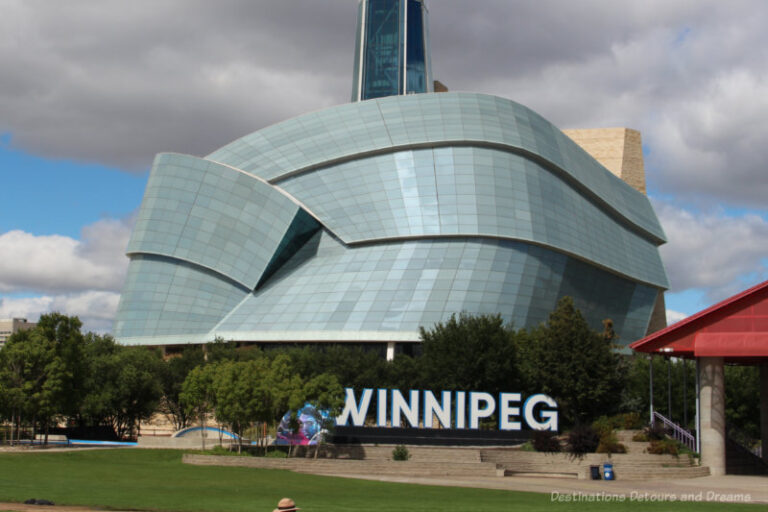
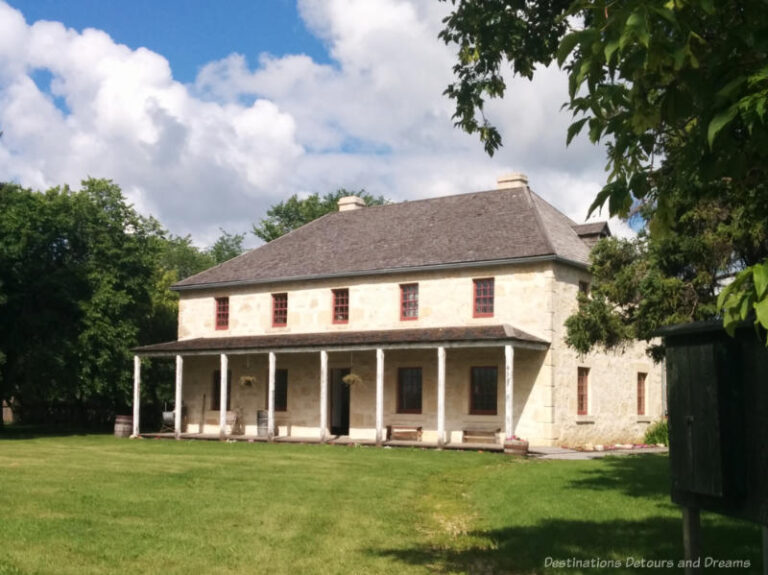

Hi Donna, what great photos of the Exchange District ! Sometimes it is hard to get the right perspectives but you’ve really pulled it off with these. I have not done this particular tour but used to have a branch on Portage so have walked most of it at one time or another . I try to do both a walking tour and a bus tour of most cities with notable architecture and would like to do this one if I return to Winnipeg
Thanks Paul. I hope to take some of the other tours of the exchange as well.
Like many Americans (United Staters), I’m fairly ignorant about all Canada has to offer, including it’s cities.When Americans think of Canada, we tend to think of Nova Scotia, Montreal, Toronto, Banff and Vancouver. We think of the rest as “I’m not sure what’s there, but I think it’s cold”. And now I’m going to look for Winnipeg on a map. It’s that bad.
Suzanne, the places you mention in Canada are great spots, but there are also wonderful spots to visit in the rest of Canada. Winnipeg is directly north of Fargo and Grand Forks, North Dakota. And yes, it can be very cold in the winter (although sunny most of the time)..The summers are warm and wonderful.
Thanks for sharing some of Winnipeg’s history. Seems like they’ve done a great job of preserving some architectural gems.
Thanks Irene. There are some interesting buildings.
Never been there, Donna. Looks very nice, maybe I should go.
Winnipeg is sometimes an under-rated destination, but there is quite a bit to see and do.
Lovely tour of my hometown, Donna! the Open Doors event is a great thing, as it offers people the opportunity to get into buildings they’ve only seen the outside of.
Thx for the heads-up on the new hotel on Waterfront Drive. I’ll have to look for it!
Hi Doreen. I love the Doors Open event. If you on are Waterfront or near by, you can’t miss the new hotel – very interesting facade.
I love old buildings. Thanks for sharing some of Winnegeg’s.
Thanks for stopping by.
It’s wonderful how they’ve preserved so many historical buildings in Winnipeg. These styles of old buildings are so interesting in your photos.
Thanks Neva.
I’ve not done very many walking tours though I can’t really say why. The couple I’ve gone on were well worth it, especially one in New Orleans.
I enjoy walking tours – guided or on my own. In new cities, I sometimes use a travel guide book as a guide for my own walking tour. A tour in New Orleans would be fun.
Donna, I hope you don`t mind but I printed this post off so my husband could read it. We live in Ontario and I had no idea that anything like that existed in Winnipeg. Some of those buildings were amazing. what really struck me was the Ashdown warehouse converted to Condos and I thought how nice that was and then you showed the other condos and there was no comparison – the Ashdown is unique while the other ones are like Condos everywhere. Thanks for sharing this.
Lenie
There are a couple of other old warehouses in the Exchange District that have been converted into condos. I toured a show home in one during a previous Doors Open weekend and it was quite stunning.
I once spent a night and part of a day in Winnipeg. Wish I’d had more time to explore. My best souvenir was a flannel nightgown, which I wore until it became a rag and some lambswool flip flops that I am still wearing, in fact right now. Just sayin. My memories of this undersung city.
I love your type of souvenirs. Not many people will think of flannel nightgowns and lambswool flip flops when they think of Winnipeg.
Thank you for the guided “armchair” tour of Winnipeg using your beautiful photos and descriptive writing. The buildings are magnificent and so distinctive. Winnipeg looks like a beautiful city to visit.
Glad you enjoyed the armchair tour. Winnipeg has lots to offer a visitor.
It sounds like this was a good walking tour and that you learned a lot. After being in Vancouver last week, I realized that there are so many places in Canada I would like to visit. I grew up in Northern Vermont so I used to visit Montreal a lot so I thought I’d seen Canada. Now I realize it’s such a big country with so much to offer.
Like the U.S., each area of the Canada is different. I hope you can a chance to visit more part of our country.
I love these kinds of tours. . .whether I am actually taking them or doing it by armchair as I did with this one. Great post – most interesting topic.
Thanks. I enjoy tours that bring a bit of history and heritage alive.
Love the interesting facades of old buildings, they have so much character. And that hotel-wow! Were those lights on the Mere building?
Alison, kt’s not lights. I’m not sure what the facade is made of. We didn’t get close enough on the tour.